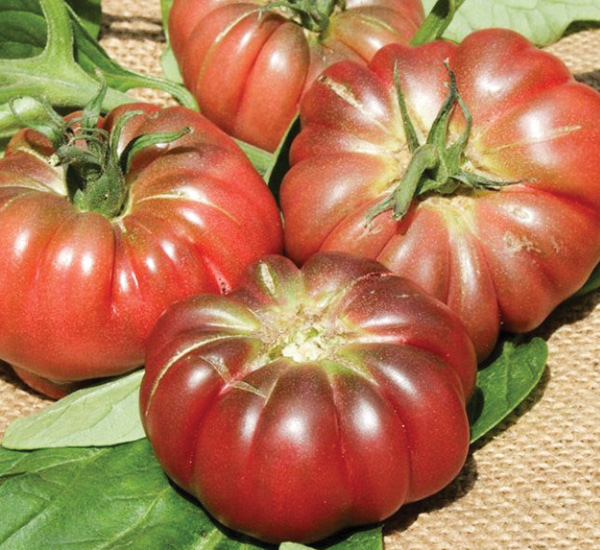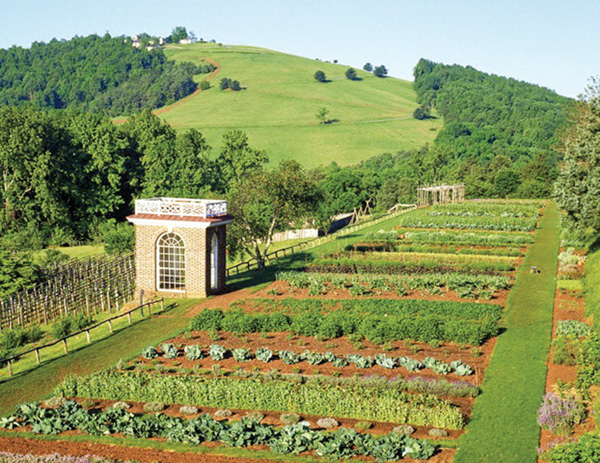Lessons from the heirloom vegetable garden at Monticello A RICH SPOT OF EARTH


Purple calabash tomatoes.

Monticello vegetable garden.
By Lynn Hoffman
Have you planned your vegetable garden for this spring? Why not consider some heirloom vegetables? How about some from early America? A good place to start looking is with Thomas Jefferson’s garden at Monticello in Virginia.
Jefferson was not only a founding father, he was also an enthusiastic gardener. His garden had an impact on the culinary, garden and landscape history of the United States that continues to present day.
Varieties popularized by Jefferson are still available. He favored vegetables at his dining table and readily experimented with vegetable seed from friends and seedsmen in both America and Europe. On his 1,000-foot terraced garden at Monticello he grew 250 varieties of more than 70 species of vegetables. The garden has recently been restored based on Jefferson original plans.
Some Jefferson favorites:
“Tennis Ball” lettuce seeds (Lactuca sativa). This was one of Jefferson’s favorite lettuce varieties. It’s the parent of our modern Boston varieties of lettuce. First sold by American seedsmen in the early 18th century, it is noted for its delicate pale-green leaves which form a loose head.
Purple calabash tomato seeds (Lycopersicon lycopersicum). Jefferson first planted tomatoes in 1809, at a time when they were relatively unknown as an edible vegetable. The purple calabash dates to pre-Columbian Mexico. Combined with hot peppers and ground squash seeds it was used by the Aztecs to make a salsa.
Fish pepper seeds (Capsicum annuum). Fish peppers are hot, a form of cayenne pepper, and were most often used as a seafood seasoning. Oral tradition traces them back to 19th century black American gardens. The compact 2-foot-high plants are also attractive as landscape and potted specimen plants.
Guinea bean or snake gourd seeds (Lagenaria siceraria). The guinea bean is a member of the bottle gourd family, and its light green fruits can grow up to 6 feet. It was known to be cultivated in the 16th century and thought to come from New Guinea. Now it’s considered a traditional Italian vegetable. To cook, pick the fruit when young (under 2 feet) and prepare as you would squash.
Costoluto Genovese tomato seeds (Lycopersicon lycopersicum) The Costoluto Genovese is an old, indeterminate Italian preserving tomato, and its unusual shape makes it most suitable for sauces and pastes.
Early Jersey Wakefield cabbage seeds (Brassica oleracea capitata cv.) Jefferson planted numerous types of cabbage over the years. The Early Wakefield forms a compact, somewhat conical head and is a fine early heading variety. It occupies little garden space and was popular in 19th century markets.
These and other heirloom plants are featured in a new book, “A Rich Spot of Earth: Thomas Jefferson’s Revolutionary Garden at Monticello” by Peter Hatch, who served as director of gardens and grounds for 35 years at Monticello. The book, with more than 200 full-color illustrations, is the first devoted to all aspects of the Monticello vegetable garden. The garden will be the topic of Hatch’s presentation at the annual Men’s Garden Club of Youngstown Garden Seminar, “Heritage Gardening for the 21st Century,” Saturday at Fellows Riverside Gardens.
 43
43
